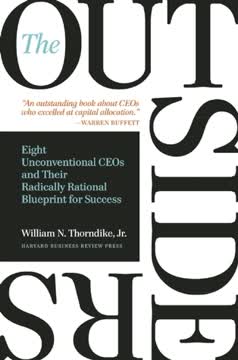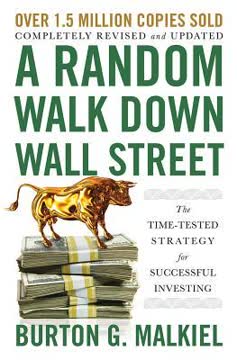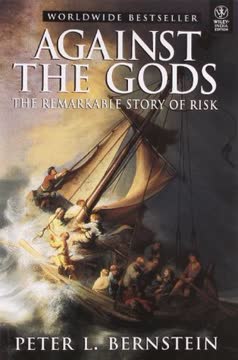Key Takeaways
1. The quest to understand and manage risk has shaped human progress
The revolutionary idea that defines the boundary between modern times and the past is the mastery of risk: the notion that the future is more than a whim of the gods and that men and women are not passive before nature.
Risk and progress intertwined. Throughout history, humans have sought to understand and control the uncertainties that shape their lives. This quest has driven innovations in mathematics, economics, and science, fundamentally altering our relationship with the future. From ancient civilizations' attempts to divine the will of the gods to modern financial instruments, the evolution of risk management reflects our growing ability to shape our destiny.
Milestones in risk management:
- Development of probability theory in the 17th century
- Creation of insurance markets in the 18th century
- Emergence of statistical analysis in the 19th century
- Modern portfolio theory in the 20th century
- Complex financial derivatives in the late 20th and early 21st centuries
The ability to quantify and manage risk has enabled unprecedented economic growth, technological advancement, and improvements in quality of life. It has allowed us to undertake more ambitious projects, make long-term investments, and push the boundaries of human achievement.
2. Probability theory emerged from gambling and games of chance
Until human beings discovered a way across that boundary, the future was a mirror of the past or the murky domain of oracles and soothsayers who held a monopoly over knowledge of anticipated events.
From dice to destiny. The foundations of probability theory were laid in the 17th century by mathematicians like Pascal and Fermat, who sought to solve puzzles related to gambling. Their work on games of chance led to the development of fundamental concepts in probability, such as expected value and the law of large numbers.
Key contributions to early probability theory:
- Pascal's Triangle and the concept of expected value
- Fermat's work on combinatorics
- Jacob Bernoulli's law of large numbers
- De Moivre's normal distribution
These mathematical tools, initially developed for understanding games of chance, soon found applications far beyond the gambling table. They became the foundation for scientific inquiry, statistical analysis, and decision-making under uncertainty in fields ranging from economics to physics.
3. Statistical analysis revolutionized decision-making under uncertainty
Given the irresistible power of chance, we have only to trace out carefully the natural laws of the variation of risk, as depending upon the quantity of a commodity in our possession, in order to arrive at a satisfactory theory of exchange.
Data-driven decisions. The development of statistical analysis in the 18th and 19th centuries marked a significant leap in our ability to make informed decisions under uncertainty. Pioneers like John Graunt and William Petty began applying quantitative methods to social and economic problems, laying the groundwork for modern data-driven decision-making.
Milestones in statistical analysis:
- Graunt's analysis of mortality rates (1662)
- Bayes' theorem on conditional probability (1763)
- Gauss's method of least squares (1809)
- Galton's concept of correlation (1880s)
These advancements allowed for more accurate predictions and better-informed decisions in fields such as public health, economics, and insurance. Statistical analysis became an essential tool for governments, businesses, and scientists, enabling them to extract meaningful patterns from large datasets and make more reliable forecasts.
4. The concept of regression to the mean challenges intuitive thinking
Regression to the mean tells heavily against the full hereditary transmission of any gift.... The law is even-handed; it levies the same succession-tax on the transmission of badness as well as of goodness.
Nature's balancing act. Francis Galton's discovery of regression to the mean in the late 19th century challenged many intuitive beliefs about heredity, performance, and prediction. This concept reveals that extreme outcomes tend to be followed by more average ones, not because of any causal mechanism, but due to the statistical nature of many phenomena.
Applications of regression to the mean:
- Understanding market fluctuations in finance
- Interpreting performance in sports and education
- Analyzing the effectiveness of medical treatments
- Predicting weather patterns
Recognizing regression to the mean helps us avoid false attributions of causality and make more accurate predictions. It cautions against overreacting to extreme events or performances, reminding us that natural variation often plays a larger role than we intuitively assume.
5. Modern portfolio theory transformed investment strategy
Risk management guides us over a vast range of decision-making, from allocating wealth to safeguarding public health, from waging war to planning a family, from paying insurance premiums to wearing a seatbelt, from planting corn to marketing cornflakes.
Balancing risk and return. Harry Markowitz's development of modern portfolio theory in the 1950s revolutionized investment management by providing a mathematical framework for understanding the relationship between risk and return. This theory demonstrated the power of diversification in reducing overall portfolio risk without sacrificing expected returns.
Key concepts in modern portfolio theory:
- Efficient frontier of optimal portfolios
- Diversification as a "free lunch" in risk reduction
- Separation of systematic and unsystematic risk
- Capital Asset Pricing Model (CAPM)
Modern portfolio theory has become the foundation of contemporary investment management, influencing everything from individual retirement planning to the strategies of large institutional investors. It has led to the creation of index funds, risk-adjusted performance measures, and sophisticated asset allocation strategies.
6. Human behavior often deviates from rational decision-making models
To me our knowledge of the way things work, in society or in nature, comes trailing clouds of vagueness. Vast ills have followed a belief in certainty, whether historical inevitability, grand diplomatic designs, or extreme views on economic policy.
The human factor. While mathematical models and theories have greatly advanced our understanding of risk and decision-making, research in behavioral economics has revealed that human behavior often deviates significantly from these rational models. Psychologists Daniel Kahneman and Amos Tversky's work on prospect theory showed that people's decisions are influenced by cognitive biases and emotional factors.
Common deviations from rational decision-making:
- Loss aversion: People feel losses more acutely than equivalent gains
- Anchoring: Relying too heavily on one piece of information when making decisions
- Overconfidence: Overestimating one's own abilities or the accuracy of one's predictions
- Herd behavior: Following the actions of others without independent analysis
Understanding these behavioral factors is crucial for developing more effective risk management strategies and policies. It highlights the importance of considering psychological factors alongside quantitative models in decision-making processes.
7. Derivatives and financial innovation offer new ways to manage risk
Derivatives are financial instruments that have no value of their own. That may sound weird, but it is the secret of what they are all about. They are called derivatives because they derive their value from the value of some other asset, which is precisely why they serve so well to hedge the risk of unexpected price fluctuations.
Financial engineering. The development of derivatives and other complex financial instruments in the late 20th century has provided new tools for managing and transferring risk. These innovations allow businesses and investors to hedge against specific risks, from interest rate fluctuations to commodity price changes.
Types of derivatives and their uses:
- Futures contracts: Locking in prices for future transactions
- Options: Providing the right, but not the obligation, to buy or sell at a set price
- Swaps: Exchanging cash flows or liabilities
- Credit default swaps: Insuring against default risk
While derivatives offer powerful risk management capabilities, they also introduce new complexities and potential systemic risks. The 2008 financial crisis highlighted both the benefits and dangers of these sophisticated financial instruments, emphasizing the need for careful regulation and risk assessment.
8. The future of risk management lies in balancing quantitative models with human judgment
Humanity did not take control of society out of the realm of Divine Providence ... to put it at the mercy of the laws of chance.
Synthesis of science and intuition. As we look to the future of risk management, the challenge lies in integrating the power of quantitative models with an understanding of human behavior and judgment. The increasing complexity of global systems and the rapid pace of technological change require a nuanced approach that combines data-driven analysis with human insight.
Key considerations for future risk management:
- Incorporating behavioral factors into quantitative models
- Developing more sophisticated simulations of complex systems
- Improving communication of risk and uncertainty to decision-makers
- Addressing emerging risks from technology, climate change, and global interconnectedness
The future of risk management will likely involve a synthesis of advanced mathematical techniques, big data analytics, artificial intelligence, and a deep understanding of human psychology and social dynamics. This integrated approach will be essential for navigating the uncertainties and opportunities of an increasingly complex world.
Human progress has been driven by our ability to understand and manage risk. From the early days of probability theory to the complex financial instruments of today, we have developed increasingly sophisticated tools to navigate uncertainty. However, as our understanding grows, so does the complexity of the risks we face. The future of risk management lies not just in more advanced quantitative models, but in a holistic approach that combines these models with a nuanced understanding of human behavior and judgment. By embracing this synthesis, we can continue to push the boundaries of what's possible while responsibly managing the risks that come with progress.
</instructions>
Last updated:
FAQ
What's Against the Gods: The Remarkable Story of Risk by Peter L. Bernstein about?
- Exploration of Risk Management: The book traces the history and evolution of risk management, showing its transformation from a mystical concept to a scientific discipline.
- Interdisciplinary Approach: Bernstein integrates psychology, mathematics, statistics, and history to provide a comprehensive view of risk.
- Cultural Impact: It highlights how mastering risk has driven economic growth and technological progress, emphasizing its importance in modern decision-making.
Why should I read Against the Gods by Peter L. Bernstein?
- Insightful Historical Context: The book offers a rich narrative that traces risk management from ancient times to the present, enhancing understanding of current practices.
- Practical Applications: Bernstein discusses how risk management principles apply to finance, health, and personal decisions, making it relevant for professionals and general readers.
- Engaging Storytelling: The accessible writing style and use of anecdotes make complex concepts easy to understand and engaging.
What are the key takeaways of Against the Gods by Peter L. Bernstein?
- Risk is a Choice: Risk-taking is a conscious choice, not just chance, encouraging ownership of decisions and associated risks.
- Importance of Probability: Probability theory is crucial for understanding and managing risk, with concepts like the Law of Large Numbers being essential for informed decisions.
- Human Behavior and Risk: Psychological factors significantly influence risk perception and decision-making, aiding in navigating uncertainty.
What is the significance of probability in Against the Gods by Peter L. Bernstein?
- Foundation of Risk Management: Probability allows quantification of uncertainty, forming the backbone of risk management.
- Key Figures in Probability: Mathematicians like Pascal and Bernoulli laid the groundwork for modern practices.
- Real-World Applications: Probability aids in everyday decision-making, from investments to personal choices, by assessing risks and rewards.
How does Against the Gods by Peter L. Bernstein address human behavior in relation to risk?
- Psychological Factors: Emotions and cognitive biases affect risk perception, influencing decision-making.
- Risk Aversion: People often prefer avoiding losses over equivalent gains, leading to suboptimal decisions.
- Decision-Making Frameworks: Combining objective data with subjective beliefs provides a comprehensive understanding of risk.
What is the Law of Large Numbers in Against the Gods by Peter L. Bernstein?
- Definition of the Law: It states that as trials increase, observed averages converge to expected averages, crucial for predictions.
- Application in Risk Management: It helps assess sample reliability and make informed decisions, emphasizing large sample sizes.
- Real-Life Implications: While individual outcomes vary, larger datasets make trends more predictable, vital in finance and public health.
What is the Petersburg Paradox in Against the Gods by Peter L. Bernstein?
- Definition of the Paradox: A thought experiment illustrating the conflict between expected value and actual utility in decision-making.
- Utility vs. Expected Value: Bernoulli showed that decisions are based on utility, not just expected value, affecting choices.
- Implications for Risk Management: Highlights the importance of understanding individual preferences and subjective value in strategies.
How does Against the Gods by Peter L. Bernstein explain the concept of risk aversion?
- Definition of Risk Aversion: The tendency to prefer certainty over uncertainty, especially regarding potential losses.
- Behavioral Economics Perspective: Psychological factors like the endowment effect cause people to weigh losses more heavily.
- Practical Implications: Understanding risk aversion aids in informed financial decisions and investment strategies.
What role does behavioral finance play in Against the Gods by Peter L. Bernstein?
- Integration of Disciplines: Combines psychology with economics to explain financial decision-making.
- Examples of Irrational Behavior: Investors often act irrationally, such as overreacting to news or failing to diversify.
- Implications for Risk Management: Understanding behavioral finance helps manage risks and make rational investment choices.
How does Against the Gods by Peter L. Bernstein address the historical evolution of risk management?
- Chronological Development: Traces risk management from early gambling theories to modern financial instruments.
- Influential Thinkers: Highlights key figures like Pascal and Galton who shaped risk understanding.
- Cultural Shifts: Discusses changing societal attitudes toward risk, reflecting broader economic transformations.
What is the relationship between risk and uncertainty in Against the Gods by Peter L. Bernstein?
- Definitions: Risk is quantifiable, while uncertainty is not easily measured or predicted.
- Decision-Making Framework: Effective decisions require understanding both risk and uncertainty.
- Practical Applications: This relationship is crucial in finance, where managing both can determine investment success.
What are the best quotes from Against the Gods by Peter L. Bernstein and what do they mean?
- "Risk is a choice rather than a fate.": Emphasizes agency in decision-making regarding risk, encouraging responsibility.
- "The future is a mirror of the past.": Highlights the importance of historical data in predicting future outcomes.
- "The measure of our ignorance.": Reflects the uncertainty in decision-making and the need for continuous learning in risk management.
Review Summary
Against the Gods receives mixed reviews. Many praise its engaging history of probability and risk management, spanning ancient times to modern finance. Readers appreciate Bernstein's accessible writing and fascinating anecdotes about mathematicians and economists. However, some criticize the book's structure, dry passages, and narrow focus on financial markets in later chapters. Several reviewers note it's best suited for those with a background in mathematics or finance. Overall, it's considered an informative, if sometimes challenging, exploration of risk and its impact on human progress.
Similar Books










Download PDF
Download EPUB
.epub digital book format is ideal for reading ebooks on phones, tablets, and e-readers.






